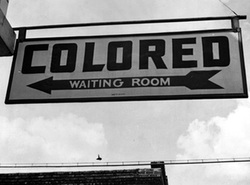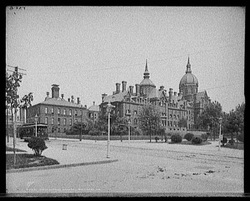Hospital Patient Relations
The Immortal Life of Henrietta Lacks:
"Doctors knew best, and most patients didn't question that. Especially black patients in public wards. This was 1951 in Baltimore, segregation was law, and it was understood that black people didn't question white people's professional judgement" (Skloot 63).
"Doctors knew best, and most patients didn't question that. Especially black patients in public wards. This was 1951 in Baltimore, segregation was law, and it was understood that black people didn't question white people's professional judgement" (Skloot 63).
As seen in History:

The photograph on the right stands as an example of what a sign outside of John Hopkins Hospital could have looked like.
The Immortal Life of Henrietta Lacks explains that colored people were not equally treated in regards to hospital patient relations. Skloot makes known on page 64 that "Several studies have shown that black patients are treated and hospitalized at later stages of their illnesses than white patients. And once hospitalized, they got fewer pain medications, and had higher mortality rates."
The Immortal Life of Henrietta Lacks explains that colored people were not equally treated in regards to hospital patient relations. Skloot makes known on page 64 that "Several studies have shown that black patients are treated and hospitalized at later stages of their illnesses than white patients. And once hospitalized, they got fewer pain medications, and had higher mortality rates."
Expectations: Patients and Doctors

(Left): John Hopkins Hospital.
In free health clinics such as John Hopkins Hospital, there was often an unspoken assumption made up on the behalf of the doctors. Whence the patient was given free treatment, the doctors then had the right to give any test thought fit for their own personal advancements in science (Skloot 37).
In free health clinics such as John Hopkins Hospital, there was often an unspoken assumption made up on the behalf of the doctors. Whence the patient was given free treatment, the doctors then had the right to give any test thought fit for their own personal advancements in science (Skloot 37).
Now:
The rights of tissues is an ongoing debate, however the treatment of patients is bettering everyday due to cases in the past such as HeLa.